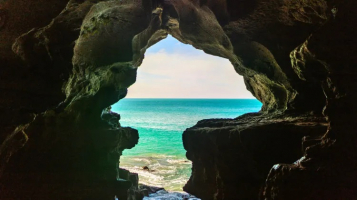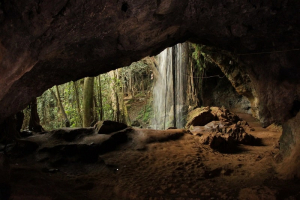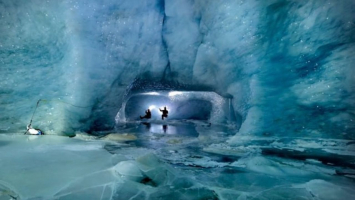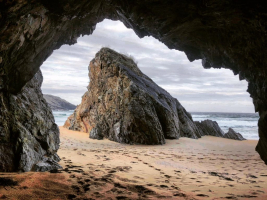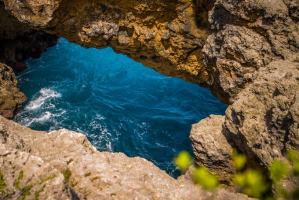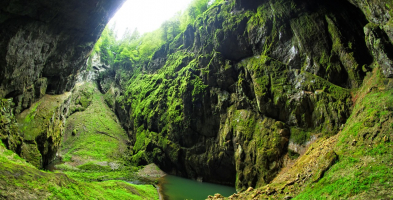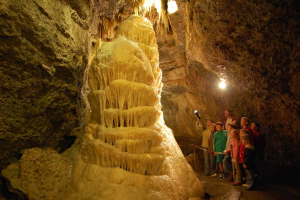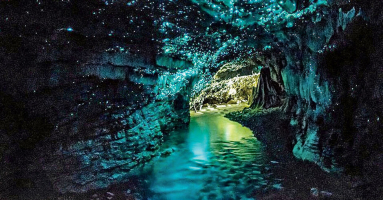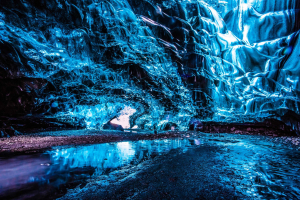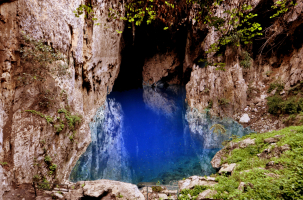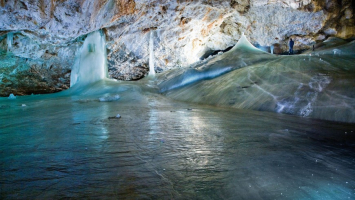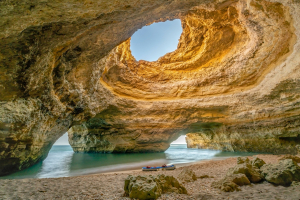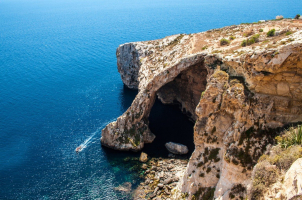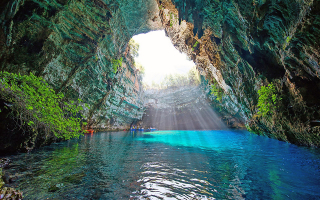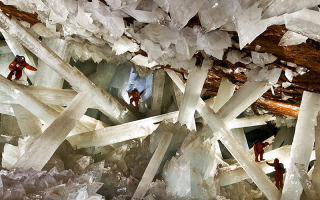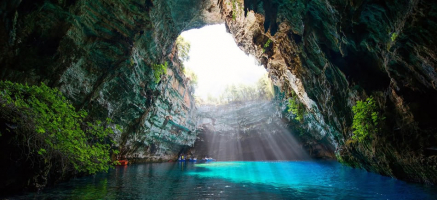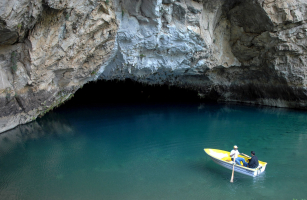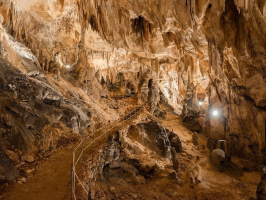Top 7 Most Beautiful Caves in Japan
Exploring within a limestone cave is one of the best ways to escape the sweltering summer heat. And there are plenty of opportunities for you to do so in ... read more...Japan! Here's a selection of 8 beautiful caves in Japan where you can see some incredible natural artwork built over tens of thousands of years while relaxing in nature's air conditioner.
-
Ryusendo Cave (, Rysend) tops the list of the most beautiful caves in Japan. It is a large limestone cave in Iwaizumi Town, Iwate Prefecture, and is considered one of Japan's three famous limestone caverns. The caves are thought to extend approximately 5000 meters below the slope, with only roughly 3500 meters investigated since studies began in the 1920s. Large amounts of clear, blue water flow from the cave's depths, generating an underwater river and four underground lakes in the caverns. Fresh spring water creates deep underground lakes in the cave; the third lake, with a depth of 98 meters and stunning emerald-green water, is the most remarkable. The fourth lake is Japan's deepest underground lake (120 meters) and one of the world's most transparent lakes, albeit it is not included in the tour. There are also unusual formations like stalactites and stalagmites, as well as rare long-eared bats can be seen. For the first time in 41 years, underwater research beyond the third lake was done in December 2009.
Ryusendo Cave is exposed to the public for about 700 meters and is accessible via elevated walkways, bridges, and stairs. The trail through Ryusendo is well-developed and easy to navigate, despite the fact that it is daring. The caves are rather vast, with only moderate constrictions at times. On their route to the underground lakes further back, visitors can stroll along the underground river that flows through the cave entrance and explore various open caverns and lofty vaulted galleries.
Opening Hours: 8:30am-6pm
Open every day of the year
Admission: Adult- ¥1,000, Elementary, jr. high student- ¥500, Child- Free
Address: 1-1 Kaminari, Iwaizumi-aza, Iwaizumi-cho, Iwate (Google Map)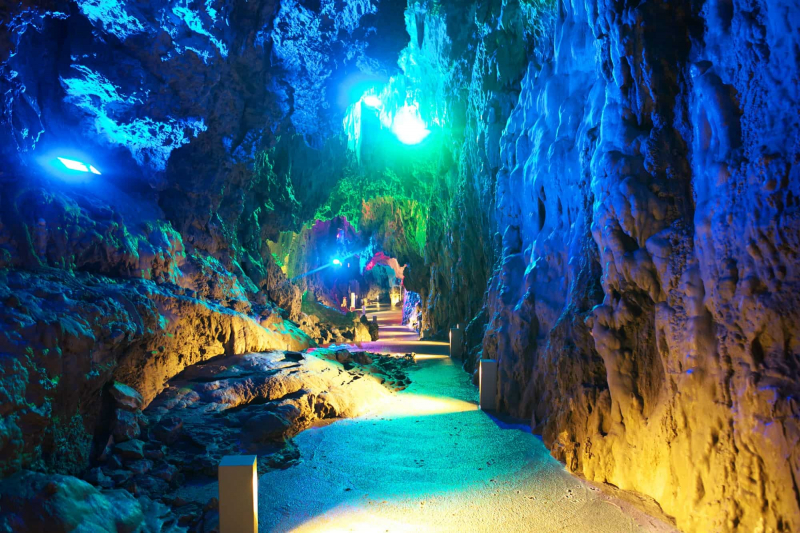
thegate12.com 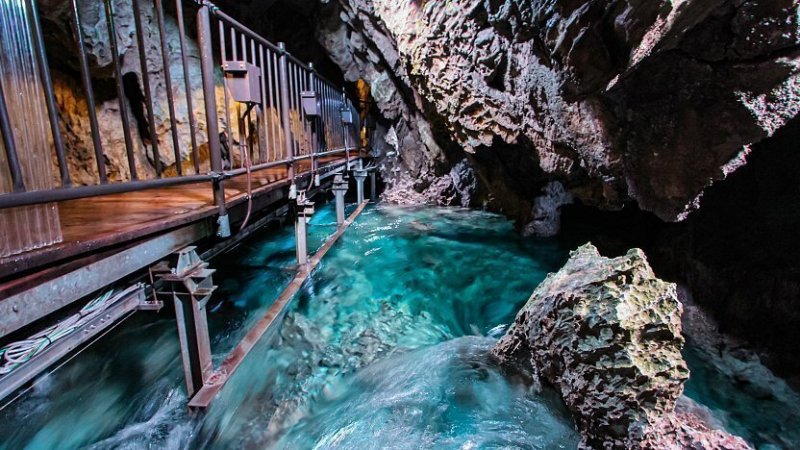
japan-guide.com -
Kankanedo, a cave formation just beneath the ridge, is where sounds softly reverberate like a whisper from the rocks. The caves are assumed to have been constructed over tens of millions of years by wave erosion, and there are four in total, thought to have been formed from three directions (sea-side, land-side and ceiling-side). The name "Kankanedo" is supposed to come from a combination of two Japanese terms. "Kari ga ne" (goose call) is the first, and "kagi kake" is the second (to lock). Both of these phrases are related to the Japanese name for the caverns. To the north, along magnificent Blur Sand Beach, you'll find Kamoaosa Village, and further along, the stunning beauty of Sakurajima Beach, which begins at Tenga Cape and is rightly titled "Beach Garden."
Kankanedo Sea Cave, the tallest of the Oga Peninsula's caves, was created by wave erosion of rhyolite volcanic rock and land jutting from the sea. The light streaming in and the sound of the waves give it a mystical air, with holes opening onto the sea, land, and sky (ceiling). An iron lock was claimed to have been placed on the cave's rock wall in the past, giving it the name Kagikakedo, or Locked Cave, which later became Kankanedo.
Opening Hours: 8:00am - 8:00pm
Address: 85 Toga Kamoasamukaiyama, Oga-shi, Akita (Google Map)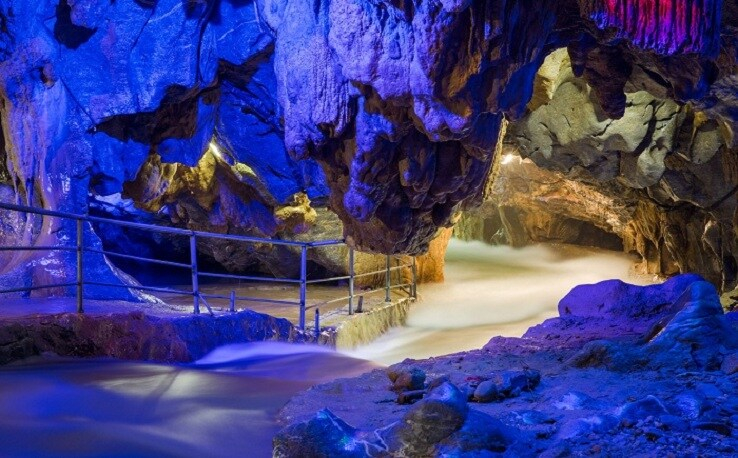
trip.com 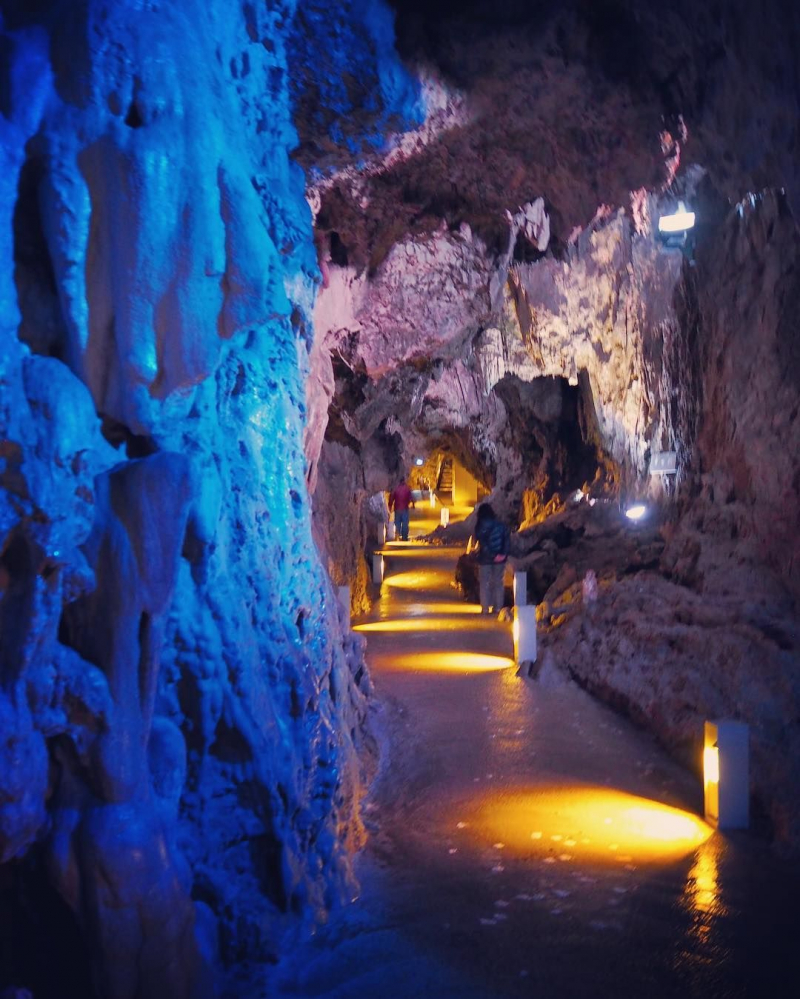
pinterest.com -
Abubukuma-do was discovered in September 1969 near the current Busan quarry site in the Abukuma Highlands (), or Harachitai Highlands (), on the western side of Mt. Otakine, in the heart of a geologic plateau formation with irregular limestone deposits. The cave entrance was first discovered near the exit of the modern-day tourist attraction. The cave itself is made up of a 12m-deep pit, a 60-meter-long tunnel, and a 15-meter-long passage. An exploration team from a Japanese university examined the cave's interior in March 1970. They located the main cave ahead of the air hole near the northern end, which had previously been thought to be the termination point. The cave's interior was modified for observation and introduced to the public in 1973, four years after it was discovered.
Inside the cave, visitors can walk a 600-meter road and a 120-meter exploration course to see the stalactites and stalagmites. It took more than eighty million years for each stalactite to form. There are around 2,500 meters of cave beyond the public parts that are not open to the public. The smaller Irimizu Shonyu-do (- Irimizu Limestone Cave), discovered in 1927, is close to Abukuma Cave. On December 28, 1934, the Irimizu Limestone Cave was classified as a National Natural Treasure. The temperature inside Abukuma-do is at 15 °C, with a humidity level of above 90%.
Opening Hours: Mar. - Nov. 8:30am-5pm, Dec. - Feb. 8:30am-4:30pm
Open every day of the year
Admission: Adult- ¥1200, Elementary, jr. high student- ¥800, Child- ¥600
Address: 1 Takinemachi Sugaya, Tamura-shi, Fukushima (Google Map)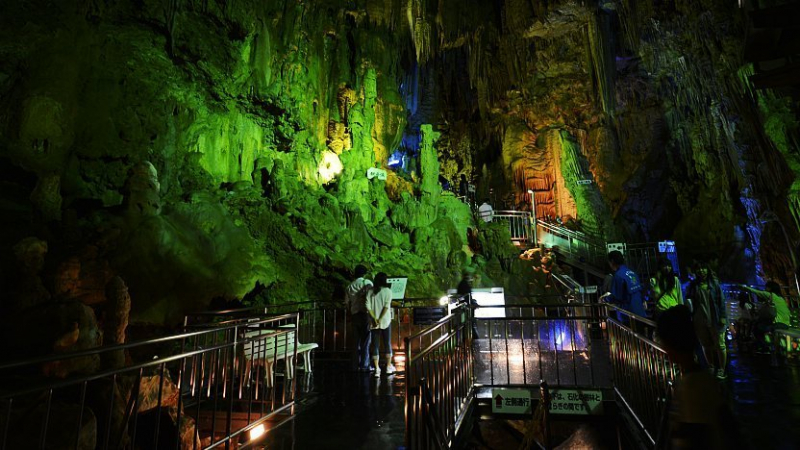
japan-guide.com 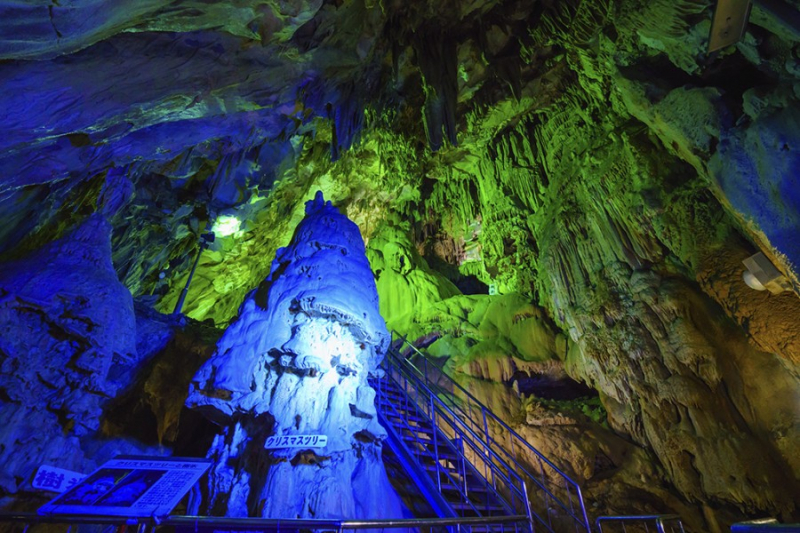
japan-guide.com -
The 4th most beautiful caves in Japan is Narusawa Ice Cave (Japanese:, Narusawa Hyketsu). It is a lava tube in Yamanashi Prefecture, Japan. It is located in the Aokigahara forest, in the Narusawa Village section. It's one of three huge lava tubes near Mount Fuji's northern foothills, with Fugaku Wind Cave and Lake Sai Bat Cave being the other two. In 1929, all three were recognized as Japanese Natural Monuments.
The Narusawa Ice Cave is 156 meters long, with two lobes ranging in width from 1.5 to eleven meters and height from one to 3.6 meters, as measured along the visiting route. Inside the cave, the usual temperature is around 3°C. The cave has been utilized as a natural refrigerator for a long time. Ice from this cave was given to the shgun and his entourage in Edo during the Edo period. Before the electric refrigerator arrived in the early 1900s, ice created here was used in the refrigerator.
Opening Hours: Apr.-mid Oct. 8:00~17:00 (Opening hours may vary depending on the weather and the condition of the cave)
Admission: Adult- ¥350 Elementary student, Child- ¥200
Address: 8533 Narusawa-mura, Miamitsuru-gun, Yamanashi (Google Map)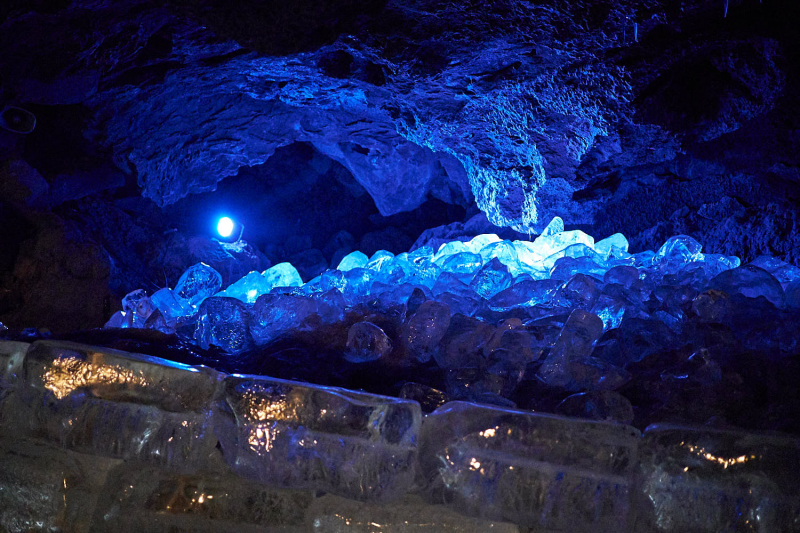
tripadvisor.com.vn 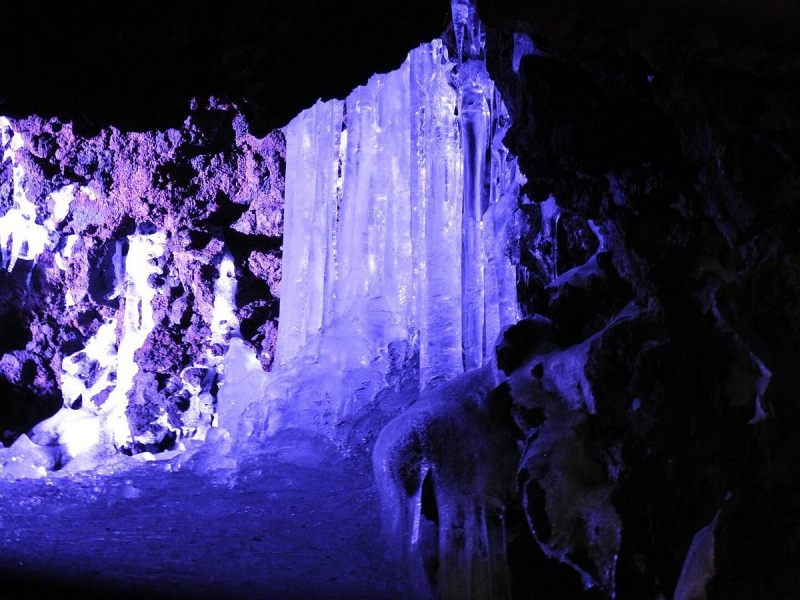
japanistry.com -
Shizuoka Prefecture's Tensodo cave, popularly known as the blue cave, is a recognized historical site. The tunnel is 147 meters long and is lit by sunshine that enters via a hole in the roof, making for excellent photography. The cave can be reached by boat, such as with Dogashima Marine's cave adventure cruise.
One of the country's natural wonders is the Dogashima Tensodo cave. The beautiful white limestone tower has a natural ceiling window that allows you to gaze directly up into the sky. The sun streaming through and reflecting on the hidden waterway beneath produces a surreal, enchanting beauty unlike any other. There are three openings to the cave: one in the east, one in the west, and one in the south. The pleasure boats go as far as the cave's center from the south outlet. There is a large round hole in the cave's roof in the center, and the way light shines into the cave via this hole is mysteriously lovely. In 1935, Tensodo was recognized as a Japanese Natural Monument. You can take a boat excursion to tour the cave and the picturesque shoreline, which is guaranteed to be an unforgettable experience.
Opening Hours: 8:15am-4:30pm
Open every day of the year
Admission: Adult- ¥1,200, Child- ¥600
Address: 410-3514 Nishina Dogashima, Nishi-Izu-cho, Kamo-gun, Shizuoka (Google Map)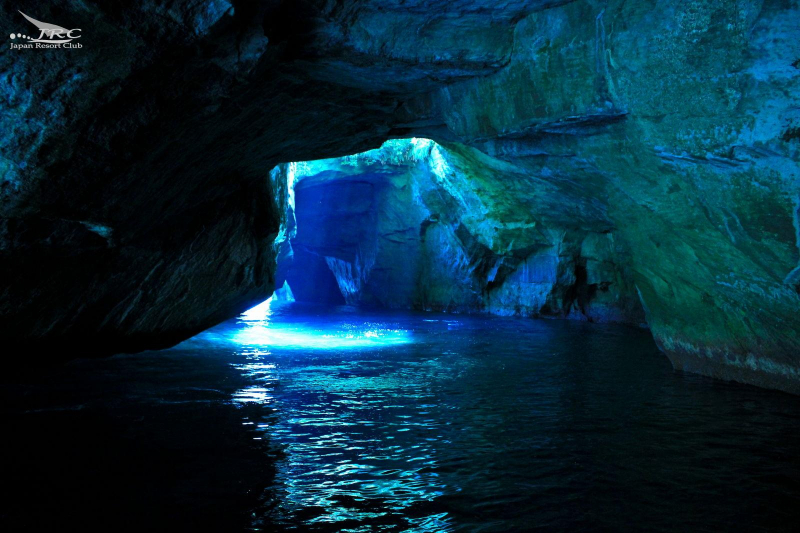
japan-resort.club 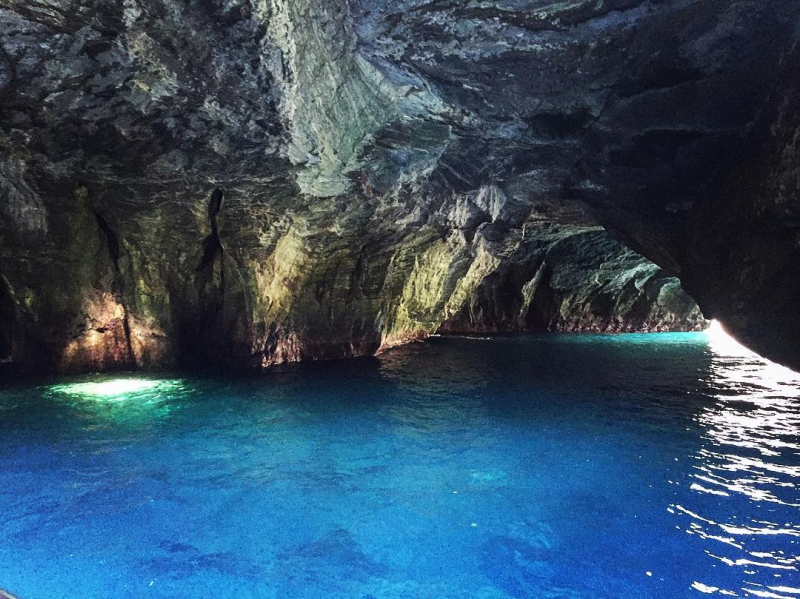
nhatbanaz.com -
The Hida Daishonyudo Cave is a limestone cave with an 800-meter length and a 900-meter height, making it the highest limestone cave in Japan! Walk through the cave's pathway to see the beautiful structures and shapes that are brought to life by warm lighting. The cave's flawed beauty is only scratched by the stalactites and stalacmites that resemble frozen ice, while the Aishin Spot, which connects cave 1 and cave 2 and is illuminated by LED lights, is a fantastic addition to the place.
Various helictites are discovered hanging from the cave's roof, creating an unusual look. This cave is divided into three sections. With its vivid illumination, the "nocturnal perspective of the dragon palace" near the entrance is an intriguing spot. Daishonyudo's notable coolness makes it an ideal place to cool off in the summer.
Opening Hours: Apr.-Oct. 8am-5:30pm
Nov.-Mar. 9am-4:30pm
Open every day of the year
Admission (both for the cave and the museum): Adult- ¥1,100, Elementary. jr. high student- ¥550
HP: www.syonyudo.com/guide.html
Address: 1147 Hiyomo, Nyukawa-cho, Takayama-shi, Gifu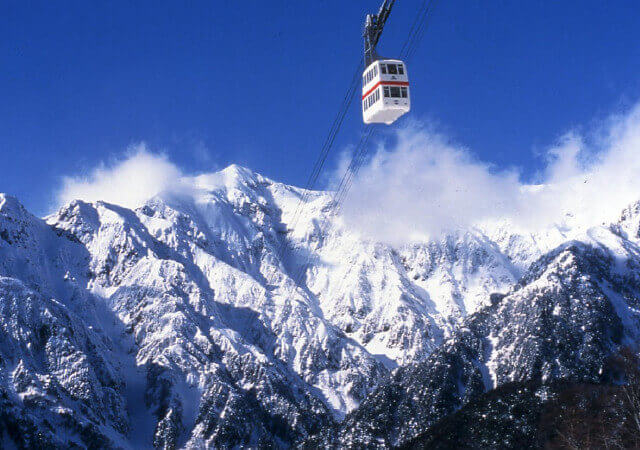
nouhibus.co.jp 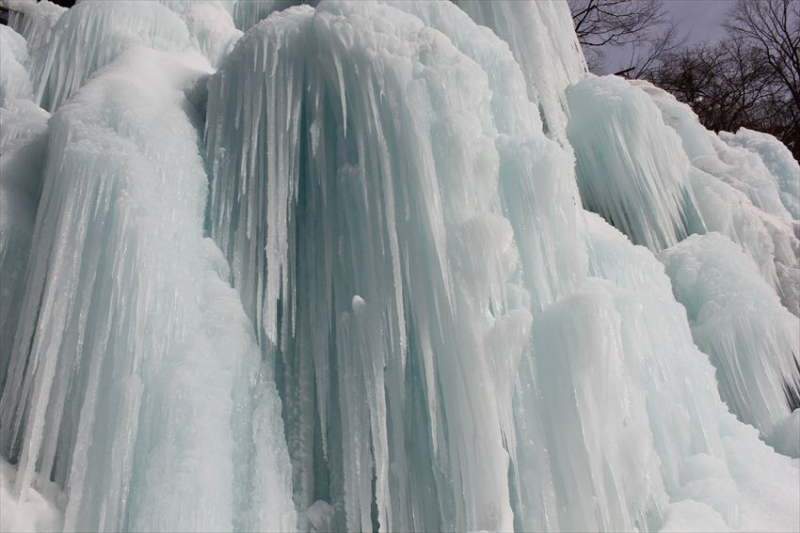
fun-japan.jp -
Ryugado (which means "dragon river cave") is one of Japan's three largest limestone caves. It was developed over 175 million years. The cave is approximately 4 kilometers long, with around 1 kilometer available to the general public. The twists and bends of this extraterrestrial cave reveal stalactites and stalagmites of various sizes. It was designated a Natural Monument of Japan in 1934 for both these spectacular landforms and the 100 distinct creatures that call this unusual ecosystem home, as well as a Historic Site for the Yayoi era vessels discovered here (300 BCE-250 CE).
Colorful lights, projection mapping, and music were added to the main tunnel in 2019 to give this beautiful geological feature a new dimension of wonder. One of the attractions is an 11-meter waterfall illuminated by blue lights and accompanied by special music produced to complement the drops of water splashing lightly against the limestone. Adventurers who wish to discover the cave's mysteries can schedule a guided tour (with with safety equipment!) that will take them to areas that regular tourists aren't allowed to see. In 2021, an unique tour of the neighboring West Water Cave will be added to commemorate the cave's 90-year anniversary. Make a point of visiting the museum on your way out, and leave time to stroll down the retail street that runs up to the cave's entrance, which is lined with chic cafes and boutiques.
Opening Hours: 8:30am-5pm (Dec.-Feb. until 4:30pm)
Open every day of the year
Admission: ¥1100
HP: www.ryugadou.or.jp/index.php
Address: 1424 Sakakawa, Tosayamada-cho, Kami-shi, Kochi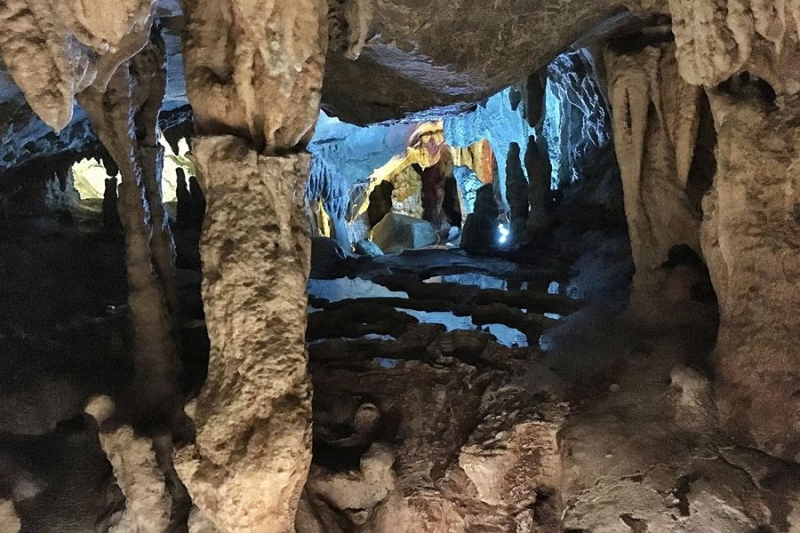
shikokutours.com 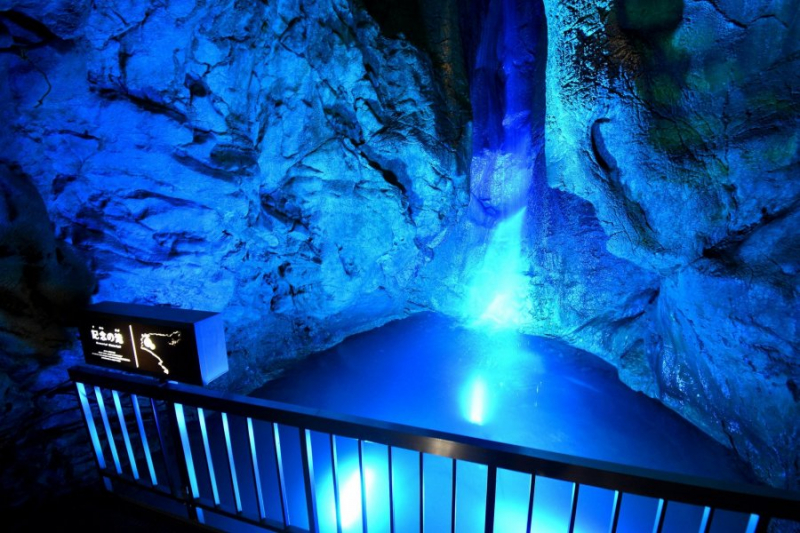
visitkochijapan.com









